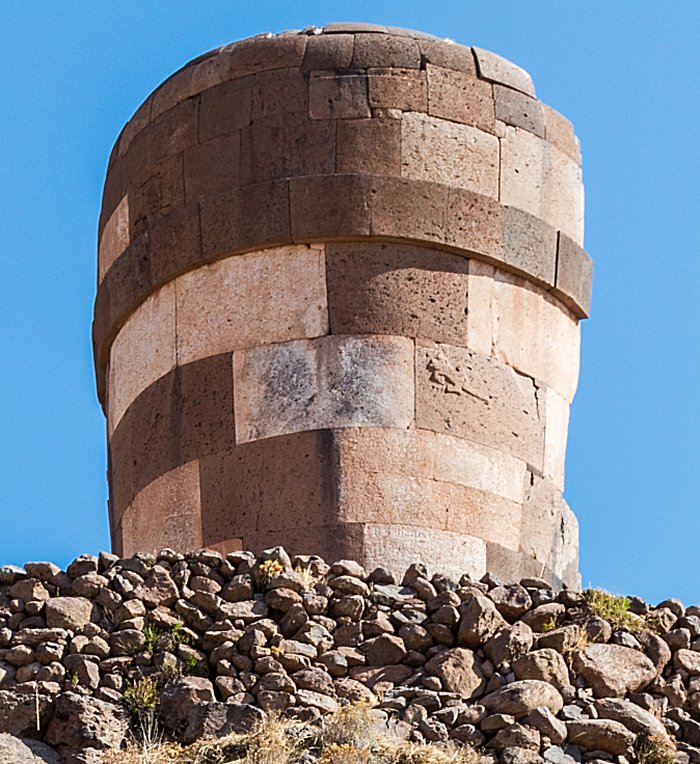Huge, Cylindrical Pre-Incan Chullpas Of Sillustani, Peru Were Used As Graves For Colla Nobles
A. Sutherland - AncientPages.com - Many archeologists agree that cylindrical towers known as 'chullpas' (chulpas), which can be viewed at Sillustani, Cutimbo, and other places, are the work of pre-Inca culture.
Chullpa, funerary urn, Sillustani, Peru. The upper one from the Inca period, the lower one from the Tiahuanaco period. Image credit: Diego Delso - CC BY SA 4.0
Sillustani is a pre-Incan burial ground (of the Colla people) on the shores of Lake Umayo, approximately 35 miles from Puno in Peru.
It is a prehistoric place where the most influential people of the society of the time were buried, dressed in fine garments, ornaments and perfectly mummified.
Chullpas were perfectly circular-shaped funeral towers that reached heights up to twelve meters. The building material was a volcanic stone carved by the skilled architects of the Collas.
It houses round and square structures with inverted cones. They are wide at the top and smaller in diameter at the bottom, like a funnel. They have only two small openings, one at the bottom and one toward the top. There are almost 90 of them, and they are spread over an area of 150 hectares.
Ruins of a chullpa funerary tower at Sillustani near Puno, Peru. Image credit: Kevstan - CC BY-SA 3.0
These openings are too small to have been used as doors, as only a child could squeeze in through them. At both Cutimbo and Sillustani, pumas and lizards can be carved into the perfectly fitted, pillowed granite blocks: the same symbols can also be seen on particular walls in Cuzco.
The structures, which could be up to 12 meters high, were built by the Aymara Indians on the altiplano of the Peruvian and Bolivian Andes as graves for the nobles of the tribe.
Northern chullpas are typically stone and round, and southern ones are square and made of sun-dried clay bricks . Many chullpas were Carvings of lizards often found on the walls of the chullpas, which were believed to represent symbols of life. The creatures can grow a new tail to replace a severed one.
Sillustani chullpas with “ stone ledges”. Image credit: Unukorno -. CC BY 3.0
In the 1905 edition of American Anthropologist, Adolph F. Bandelier (1840-1914), one of the most prominent historians and anthropologists in New Mexico in the nineteenth century, discussed many of the theories behind the towers and sun circles.
Bandelier suggested that the towers were probably used as grain storage silos, with the small doors ideally suited for protecting the crop. He also states that it was the opinion of most of his contemporaries that the towers were burial chambers.
In a chullpa, a deceased - member of a noble family - was buried in a crouched position with possessions such as clothing, jewelry, and equipment. A chullpa almost always has only one opening to the east towards the rising sun.
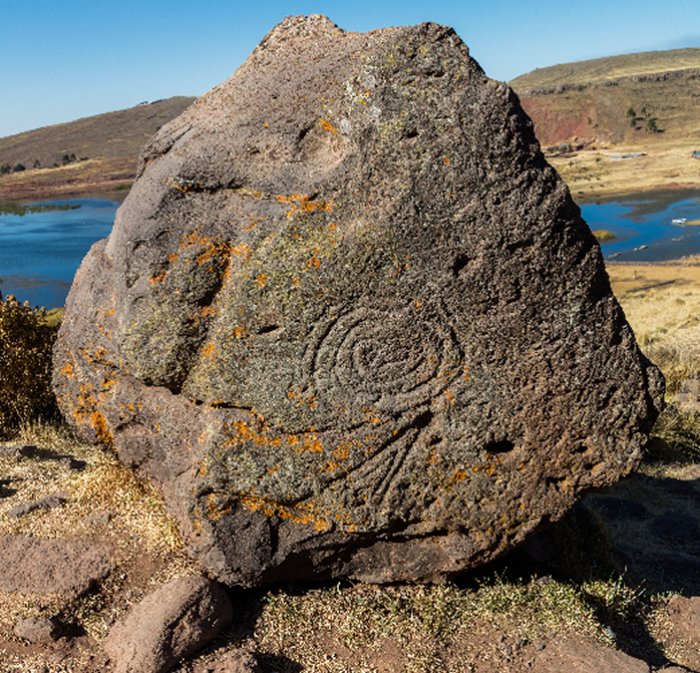 Petroglyph, Sillustani, Peru. Stone with carvings at the entrance. Image credit: Diego Delso - CC BY SA 4.0
Petroglyph, Sillustani, Peru. Stone with carvings at the entrance. Image credit: Diego Delso - CC BY SA 4.0
While the chullpas of the northern Altiplano are circular in plan and built of stone - mostly of ashlar and, as far as built in the Inca period, without mortar - the towers farther south are rectangular in plan and built of adobe. Most the structures had no decorations: however, numerous funerary towers at Sillustani had carved decorations in the form of lizards, whose regrowing tail is considered a symbol of renewed life.
Chullpas are ideally located and can quickly provide conditions indispensable for mummification, namely wind and dryness. The buildings were most probably used as funeral towers by some cultures, including the Incas, but their original purpose might have differed.
While chullpas are not unique to Sillustani and are found across the Altiplano, this site is considered the best and most preserved example. The tallest are about 12 meters (39 ft) high.
The architecture of the Sillustani towers is considered more complex than typical Incan architecture. In contrast with the Inca, who used stones of varying shapes, the Colla people used brick-like rectangular edges.
Funeral towers from pre-Inca, Aymara-speaking Lupaca culture. Image credit: Thigre - CC0
The Colla were later incorporated into the Inca empire and lived in their region for centuries.
They built the cylindrical chullpas to bury their nobility and to provide a connection between life and death. The lizard symbol carved on the walls represents life, as they can grow new tails.
It is also important to note that the openings in the tombs face east, where it was believed that the sun was reborn by “Pachamama,” or Mother Earth, each day.
Unfortunately, many of the tombs have been plundered by grave robbers, while others were left unfinished by the original builders.
Written by – A. Sutherland - AncientPages.com Senior Staff Writer
Updated on September 14, 2024
Copyright © AncientPages.com All rights reserved. This material may not be published, broadcast, rewritten or redistributed in whole or part without the express written permission of AncientPages.com
Expand for referencesMore From Ancient Pages
-
 Mysteries Of The Great Dismal Swamp – Unexplained Vanishings, Bewildering Encounters With Weird Beings, And Scary Legends
Featured Stories | Dec 22, 2024
Mysteries Of The Great Dismal Swamp – Unexplained Vanishings, Bewildering Encounters With Weird Beings, And Scary Legends
Featured Stories | Dec 22, 2024 -
 Puzzling Palpa Lines In Peru Made By The Paracas Culture Are Even Older Than The Nazca Lines
Featured Stories | Jan 2, 2018
Puzzling Palpa Lines In Peru Made By The Paracas Culture Are Even Older Than The Nazca Lines
Featured Stories | Jan 2, 2018 -
 Legendary Grianán Of Aileach Built By God Dagda Of Tuatha De Danann Was Once The Royal Seat Of The Kingdom Of Ailech
Featured Stories | May 13, 2021
Legendary Grianán Of Aileach Built By God Dagda Of Tuatha De Danann Was Once The Royal Seat Of The Kingdom Of Ailech
Featured Stories | May 13, 2021 -
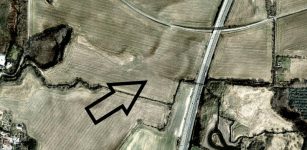 Archaeologists Uncover Secrets Of ‘Vallø Borgring’ Viking Age Circular Fortress
Archaeology | Oct 11, 2015
Archaeologists Uncover Secrets Of ‘Vallø Borgring’ Viking Age Circular Fortress
Archaeology | Oct 11, 2015 -
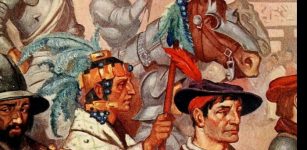 On This Day In History: Spanish Conquistadors Led By Hernan Cortés Entered The Aztecs Capital Tenochtitlán – On Nov 8, 1519
News | Nov 8, 2016
On This Day In History: Spanish Conquistadors Led By Hernan Cortés Entered The Aztecs Capital Tenochtitlán – On Nov 8, 1519
News | Nov 8, 2016 -
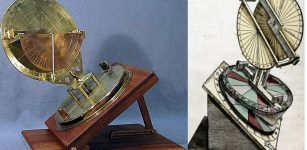 Torquetum: Sophisticated Medieval Astronomical Instrument
Ancient History Facts | Jul 12, 2018
Torquetum: Sophisticated Medieval Astronomical Instrument
Ancient History Facts | Jul 12, 2018 -
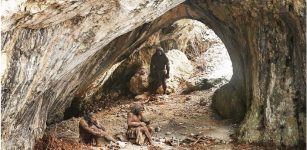 Ancient Secrets Of Polish Ciemna Cave Inhabited By Humans 120,000 Years Ago
Featured Stories | Nov 22, 2016
Ancient Secrets Of Polish Ciemna Cave Inhabited By Humans 120,000 Years Ago
Featured Stories | Nov 22, 2016 -
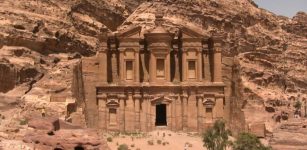 Unclear Purpose Of Mysterious Rock-Cut City Of Petra – Was It A Fortress Or Sacred City?
Featured Stories | May 30, 2020
Unclear Purpose Of Mysterious Rock-Cut City Of Petra – Was It A Fortress Or Sacred City?
Featured Stories | May 30, 2020 -
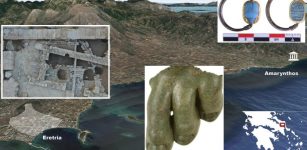 Sanctuary Of Amarysia Artemis, Amarynthos – New Valuable Finds By Greek-Swiss Team
Archaeology | Sep 26, 2022
Sanctuary Of Amarysia Artemis, Amarynthos – New Valuable Finds By Greek-Swiss Team
Archaeology | Sep 26, 2022 -
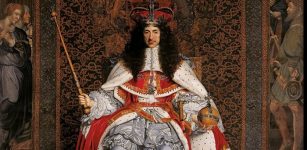 On This Day In History: King Charles II Is Restored To The Throne Of England, Scotland And Ireland – On May 29, 1660
News | May 29, 2016
On This Day In History: King Charles II Is Restored To The Throne Of England, Scotland And Ireland – On May 29, 1660
News | May 29, 2016 -
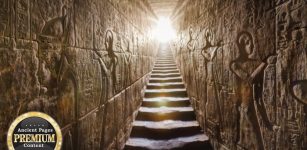 Edfu Texts Reveal Secrets Of Predynastic Egypt And Zep Tepi
Egyptian Mythology | May 27, 2021
Edfu Texts Reveal Secrets Of Predynastic Egypt And Zep Tepi
Egyptian Mythology | May 27, 2021 -
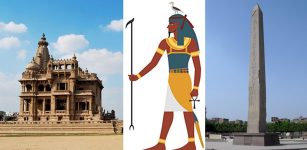 Geb – Egyptian God Of Earth And Member Of The Ennead – His Laughter Created Earthquakes
Egyptian Mythology | Feb 12, 2019
Geb – Egyptian God Of Earth And Member Of The Ennead – His Laughter Created Earthquakes
Egyptian Mythology | Feb 12, 2019 -
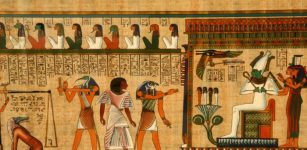 First Book Of Breathing: Egyptian Papyrus Sheds Light On Funerary Text Helping The Deceased In Afterlife
News | Oct 22, 2020
First Book Of Breathing: Egyptian Papyrus Sheds Light On Funerary Text Helping The Deceased In Afterlife
News | Oct 22, 2020 -
 Shangshan Culture Drank Ancient Rice Beer 10,000 Years Ago – Archaeological Evidence Found In China
Archaeology | Dec 13, 2024
Shangshan Culture Drank Ancient Rice Beer 10,000 Years Ago – Archaeological Evidence Found In China
Archaeology | Dec 13, 2024 -
 Interaction Between Homo Sapiens And Neanderthals Studied Using New Radiocarbon 3.0 Method
Archaeology | Feb 15, 2023
Interaction Between Homo Sapiens And Neanderthals Studied Using New Radiocarbon 3.0 Method
Archaeology | Feb 15, 2023 -
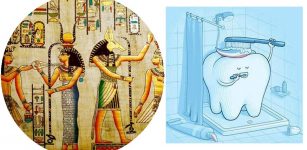 Ancient Egyptians Invented Toothpaste
Ancient Technology | Dec 26, 2015
Ancient Egyptians Invented Toothpaste
Ancient Technology | Dec 26, 2015 -
 Baffling Cathar Mystery – Was It A Double Ancient Reincarnation Case?
Featured Stories | Jan 12, 2025
Baffling Cathar Mystery – Was It A Double Ancient Reincarnation Case?
Featured Stories | Jan 12, 2025 -
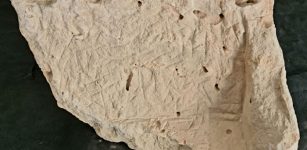 3,500-Year-Old Stone Inscribed With A Curse Against The City’s Governor Discovered In Jerusalem
Archaeology | Jul 13, 2022
3,500-Year-Old Stone Inscribed With A Curse Against The City’s Governor Discovered In Jerusalem
Archaeology | Jul 13, 2022 -
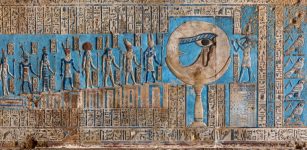 Secrets Of Egyptian Blue – World’s Oldest Artificial Pigment And Its Extraordinary Properties
Featured Stories | May 10, 2021
Secrets Of Egyptian Blue – World’s Oldest Artificial Pigment And Its Extraordinary Properties
Featured Stories | May 10, 2021 -
 Remarkable 2,000-Year-Old Smoke-Absorbing Lamps Reducing Pollution Discovered
Archaeology | Nov 12, 2015
Remarkable 2,000-Year-Old Smoke-Absorbing Lamps Reducing Pollution Discovered
Archaeology | Nov 12, 2015

